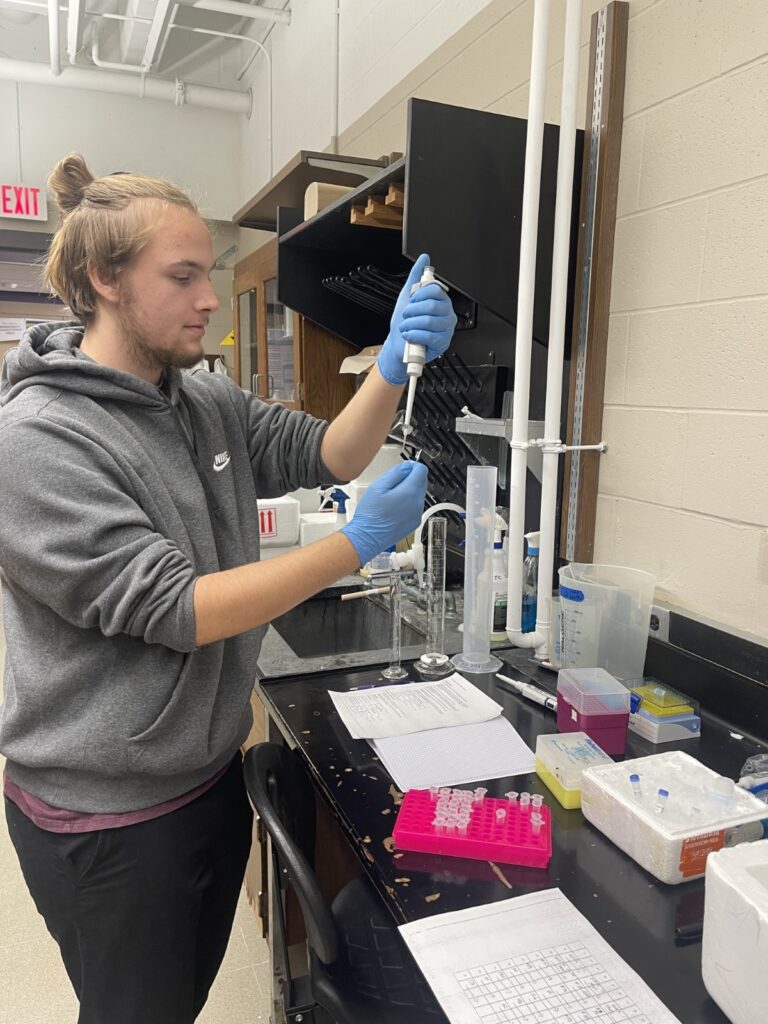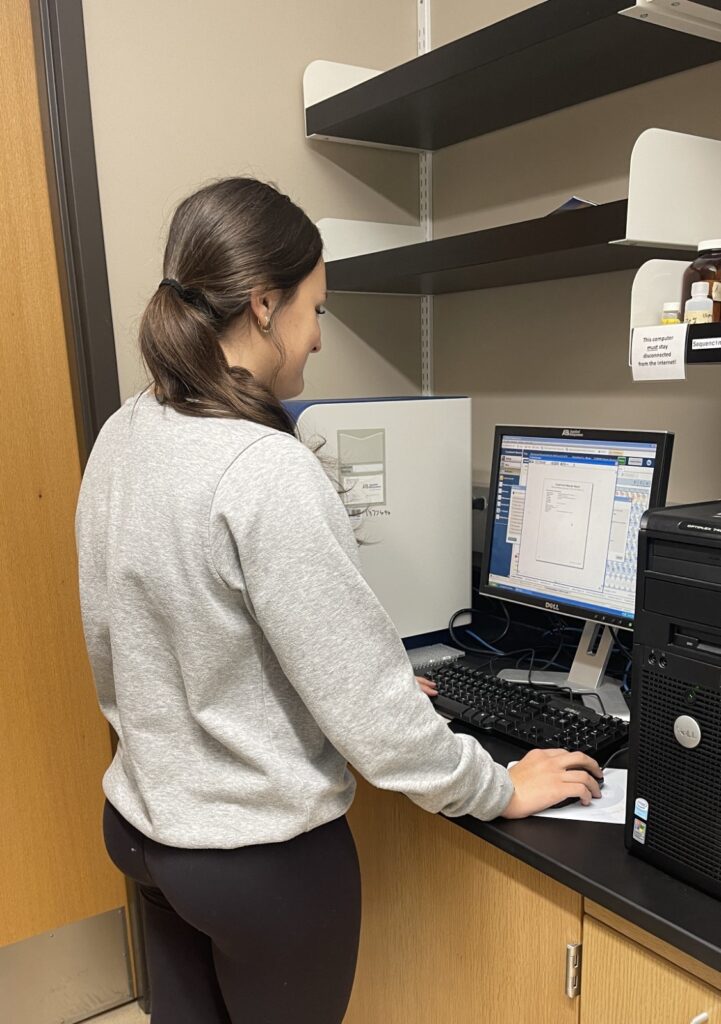14 October 2022
By: Brooke Andel and Spencer Harstad
Introduction:
Since the beginning of the Fall semester of 2022, we were back in the lab starting with practicing our basic skills again. After we had refreshed up on the simple tasks, we picked up right where we had left off from the previous semester with our research. Over the past few weeks, we have been working hard on all the protocols in order to continue to make the advancements forward in our research. Last semester, we worked through the processes of selecting genes to test for the regulation of these genes in green anole lizards (Anolis carolinensis) when compared to breeding season versus non breeding season. Cold-inducible RNA-binding protein (CIRBP) and Hormonally Up-Regulated Neu-Associated Kinase (HUNK) are the two genes we have been conducting research on over the past year. At the beginning of this semester, we started by synthesizing cDNA from the RNA we had isolated last Spring. We also have done a dissection to obtain more brain tissue samples for the next upcoming cohort of RISEbio Scholars. Now, over the past three weeks, we have been working on standard curves and qPCRs for each of our genes.
Research:
The next step in the lab was to make a standard curve to allow us to use a known concentration of a solution that we could eventually compare unknown samples to. To perform a standard curve, we needed to perform a serial dilution for our cDNA, like when we have done a serial dilution in the past. To begin this entire process, we wanted to make sure to practice these skills before performing this protocol with actual samples, so we performed the protocol using water with food coloring in it. We worked through the process of doing the math calculations for each dilution, then performing the actual dilution with dyed water and regular water and practiced pipetting into a 96-well plate. We wanted to make sure to practice all these skills before because pipetting accuracy becomes extremely crucial during this stage of the research.
We then moved onto performing the protocol with our actual primers and cDNA from a sample that was given to us by Dr. Cohen for each of our genes to create standard curves. We pipetted each of the standards (5, 1, 0.2, 0.04) and our no template control in triplicate, which means we put each standard in three different wells of the plate. We made sure to evaluate our graphs, efficiency values (≈2), and run a gel electrophoresis to check for amplification and no primer dimers, before deciding on which gene to perform a full run with first. We performed the standard curve protocol twice to ensure we could repeat our results, then we decided to move forward in performing a full run on the HUNK gene first. We used primer 1 for HUNK at a 1 molar concentration when we performed the full run. We created a large master mix to begin and made the same standard curve as before and in addition, took the master mix we created and added the same amount of cDNA from all 24 samples that were synthesized into separate tubes for prepping to pipette all the samples in the 96-well plate. We ran all the samples in triplicates, so we pipetted 15 µL, three times, from each sample of master mix and cDNA into the plate just like we did for each of the standards as well. We then allowed the qPCR to run in the machine and obtained the results. We will now need to analyze the results and make a decision on the next step we should take, whether that be to perform a second full run qPCR on HUNK or if we can move onto performing a full run for CIRBP.
Conclusion:
Throughout this process, we have continued to expand our knowledge and improve our skills within the laboratory setting. This process has continued to teach us how to perform new techniques, work through setbacks, and learn the process of performing research. We are curious to see the process that we continue to work through to potentially and hopefully reach our goal of answering the questions around the regulation of our two genes.



